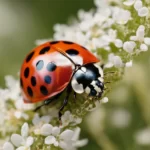As urban and suburban areas continue to expand, encounters between humans and coyotes are becoming more frequent. These adaptable canines often venture into human habitats in search of food, water, and shelter, leading to potential conflicts. To promote safety and peaceful coexistence, it’s essential to explore non-lethal methods for deterring coyotes. One such method involves utilizing specific scents that coyotes dislike. This article delves into the various odors that can act as natural repellents, providing a humane way to keep these animals at bay.
Coyote Behavior
To effectively use scents as deterrents, a basic understanding of coyote behavior is crucial. Coyotes are highly adaptable and intelligent animals that use their acute sense of smell to navigate, hunt, and mark territory. This reliance on smell means that certain odors can be particularly off-putting to them, making scent-based deterrents a viable strategy for discouraging their presence. Coyotes are attracted to areas with readily available food sources, including garbage, pet food, and compost bins. By introducing smells that coyotes find repulsive, we can make our properties less appealing and encourage them to keep their distance.
Effective Scents to Deter Coyotes
Several specific scents have been identified as effective in repelling coyotes. These odors can be used around the perimeter of a property or near potential points of entry to discourage coyotes from entering.
Ammonia
Ammonia’s strong, pungent odor is highly effective at deterring coyotes. The scent mimics the smell of predators’ urine, signaling danger to coyotes and encouraging them to steer clear. To use ammonia as a deterrent, soak rags or cotton balls in ammonia and place them in areas where coyotes are likely to enter your property. It’s important to use ammonia cautiously, as its strong fumes can be harmful to pets and humans if inhaled directly.
Vinegar
Vinegar, especially apple cider vinegar, is another scent that coyotes dislike. Its sharp, acidic smell is unpleasant to them and can serve as a deterrent. Vinegar can be sprayed around the edges of a property or on objects like trash bins to mask food smells that might attract coyotes. Reapplication every few days or after rain is necessary to maintain its effectiveness.
Citrus Peels
The fresh, tangy smell of citrus peels is not appealing to coyotes. Placing citrus peels around your garden or property can act as a natural repellent. This method not only utilizes natural, biodegradable materials but also recycles kitchen waste. Regular replacement of the peels is needed to ensure they remain potent.
Peppermint Oil
Peppermint oil is recognized for its strong, refreshing scent, which is not only unpleasant to coyotes but also to many other pests. Its natural potency makes it an excellent choice for creating a barrier against coyotes. To utilize peppermint oil as a deterrent, mix a few drops with water in a spray bottle and apply the solution around the perimeter of your property, focusing on potential entry points and areas where coyotes are likely to explore. The scent needs to be refreshed periodically, especially after rain or heavy dew, to maintain its effectiveness.
Mothballs
Mothballs, while traditionally used to protect clothing from moths and other insects, contain naphthalene, a substance that emits a strong odor disliked by coyotes. By placing mothballs in strategic areas around your yard, you can create a scent barrier that coyotes are reluctant to cross. However, caution is advised when using mothballs outdoors, as they can be toxic to pets, wildlife, and even humans if used improperly. It’s important to follow the product’s instructions carefully and consider the environmental impact before opting for this method.
Implementing Scent Deterrents
Effectively using scents to deter coyotes involves more than just choosing the right smell. Here are some best practices for deploying scent-based deterrents around your property:
- Strategic Placement: Focus on areas that are most likely to attract coyotes, such as garbage storage areas, compost bins, and the edges of your property. Placing deterrents in these locations can help prevent coyotes from coming closer to your home.
- Regular Maintenance: Scents fade over time and can be washed away by rain, meaning regular reapplication is necessary to ensure continuous protection. Establish a routine to check and refresh the deterrents you’ve put in place.
- Safe Use: Always consider the safety of your family and pets when using scent deterrents. Avoid placing harmful substances like ammonia and mothballs where children or pets can access them, and use natural options like citrus peels and peppermint oil whenever possible.
Additional Measures to Coyote-Proof Your Property
While scent deterrents can be an effective way to discourage coyotes, they are most successful when used as part of a broader strategy. Other measures to consider include securing garbage cans with tight-fitting lids, removing outdoor food sources (such as pet food bowls), and installing motion-activated lights to startle and scare away coyotes. These actions, combined with the use of scent deterrents, create a multi-layered defense that can significantly reduce the likelihood of coyote encounters.
Limitations and Ethical Considerations
While employing scents as deterrents can be an effective method to discourage coyotes from entering specific areas, it’s important to acknowledge the limitations of this approach. Coyotes are highly adaptable animals, and over time, they may become desensitized to certain smells, especially if the deterrents are not regularly refreshed or if the coyotes are particularly determined due to scarcity of food. Therefore, reliance solely on scent-based strategies may not always provide a long-term solution to wildlife management.
- Ethical Use: When implementing scent deterrents, consider the impact on the coyotes and the local ecosystem. The goal should be to deter, not harm, the wildlife. Choose methods that are humane and non-toxic, avoiding substances that could cause injury or distress to the coyotes or other non-target animals. It’s also important to respect wildlife laws and regulations in your area, ensuring that your deterrent strategies are in compliance.
- Environmental Impact: Consider the environmental footprint of the deterrents used. Natural, biodegradable options like citrus peels and peppermint oil are preferable to chemicals that can leach into the soil and water, potentially harming plants and aquatic life. Being mindful of the broader ecological impact of our actions is crucial for sustainable coexistence with wildlife.
Conclusion
Dealing with coyotes and other wildlife encroaching on human habitats requires a balanced, informed approach. Scent deterrents, when used wisely and ethically, can be a part of this strategy. They offer a humane way to discourage coyotes, reducing the likelihood of close encounters while minimizing harm to the animals and the environment. However, it’s essential to remember that these measures should be part of a comprehensive wildlife management plan that includes securing food sources, proper waste management, and habitat modification.
Ultimately, the aim is to promote coexistence between humans and wildlife, recognizing the value and rights of all creatures. By employing a variety of deterrent strategies and staying informed about wildlife behavior, we can protect our properties and families while also respecting the natural world. This balanced approach is key to living harmoniously with the coyotes and other wildlife that share our spaces.



